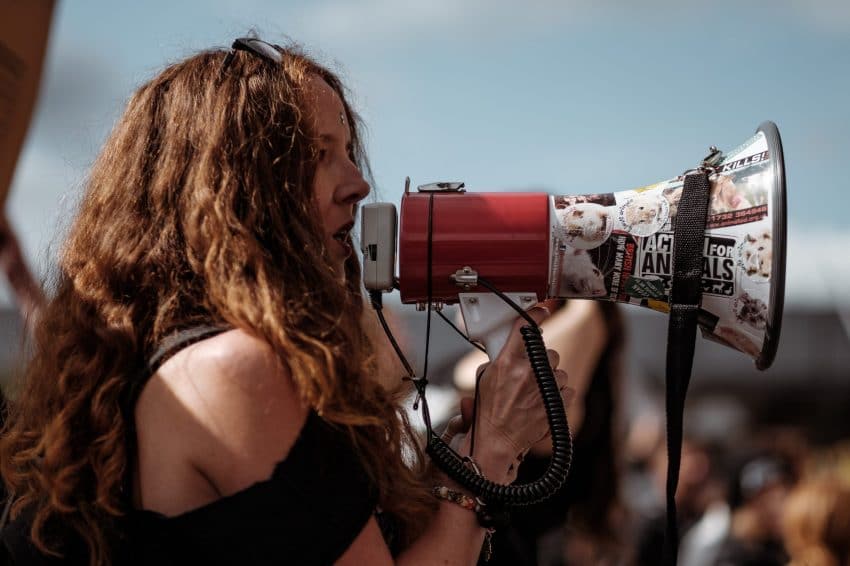10 Effective Communication Techniques For A Great Life!
Updated: June 19, 2024

The best communicators aren’t born with expert skills — they develop effective communication techniques over time. With the right balance of skills, you can become an effective communicator too!
Find out what is effective communication, barriers to effective communication, and the most effective communication techniques to take your skills to the next level!
Definition Of Communication
Communication is all about getting information from one party to another. According to Merriam-Webster Dictionary, communication can be defined as the process or act of exchanging, expressing or conveying information and ideas through writing, speaking and gesturing.
What Is Effective Communication?
While anyone can communicate, it takes some practice to become an effective communicator.
But what makes effective communication? The keys to effective communication lie in both party’s hands. The expresser must deliver messages clearly, while the receiver must listen carefully. Effective communication happens when the correct purpose of the message is sent and understood. Speakers must articulate, and listeners must practice active listening.
The Importance Of Effective Communication
If you can master the art of delivering messages and receiving them effectively, you are sure to succeed in many areas of life. A person with effective communication skills can get their message across without misunderstanding which reduces the likelihood for mistakes and conflict. Effective communication means you are more likely to get exactly what you need.
Three Types Of Communication
There are three main types of communication. For our full guide, click here.
1. Verbal Communication
Verbal communication is oral or spoken communication that is usually done to inform, persuade, discuss, or express ideas.
2. Nonverbal Communication
Nonverbal communication is the type of communication that you usually can’t hear. This can be body language, facial expressions, pauses, or eye contact.
3. Written Communication
The third main type of communication is written communication. Usually, written information is communicated to others by email, text, notes, or letters.
Barriers To Effective Communication
1. Stress
If you are stressed, it is likely to come out in your tone and your ability to effectively listen. You may get easily frustrated or have a hard time communicating your thoughts.
2. Not Paying Attention
If you’re not listening or if your mind is elsewhere, you cannot have effective communication. If you feel you can’t stay focused, regroup yourself and if that doesn’t work, you may need to reschedule the conversation.

Photo by Kaboompics .com from Pexels
3. Body Language
Using the wrong body language sends the wrong message. Make sure what your limbs, face, and eyes are doing match how you want to be perceived.
4. Judging
If you are judging the other person, no doubt that there will be a barrier to understanding them.
5. Unwanted Advice
If you weren’t asked for your opinion, don’t share it! Especially if it comes to a sensitive topic. If you aren’t sure if you should share your advice, ask the other person if it is okay before jumping in.
6. Avoiding Concerns
If you skirt around the other person’s issues that they brought up, you won’t be able to move forward with effective communication.
7. Language Choice
Try to use a language that the other person will understand. Using technical language or jargon will not only confuse your audience, but may make them feel alienated as well.
The Best Effective Communication Techniques
1. First Understand: Ask Questions
Asking questions is a great opener for effective communication techniques. But remember to make sure your questions are open-ended, instead of ones that require a yes-or-no answer only. That way, you open the conversation for further communication.
- Listening: Using active listening is one of the most effective communication techniques. Listen with your entire body, be alert as the other person is speaking, and stay mentally engaged the entire time.
- Observing: Pay attention to the other person as they are talking. What are their nonverbal clues such as eye contact and body language telling you?
- Using Feedback: Ask the person you were speaking with to give you feedback. This can either be on your speaking style, or ask them to summarize your points. If they are able to accurately tell you your message back to you, then you know you have communicated your thoughts effectively.
2. Be Clear
- Articulate Your Views Clearly: Being able to clearly communicate what’s going on in your mind is an effective communication technique that will help you avoid confusion, and get you closer to what you need.
- Eliminate Filler Words: If you think “um” and “like” are the only filler words, you need to take a better look at this list. Filler words can include many words and phrases subbed for pauses, such as “so,” “you know,” and “I mean.” A good way to recognize your commonly used fillers is to record yourself speaking and recognize those fillers. Then, practice replacing one of them with a breath or a pause and keep going until you no longer speak using these fillers.

Photo by Clem Onojeghuo on Unsplash
3. Read Books
By reading books, you increase your vocabulary, expose yourself to new and varied forms of expression, and keep yourself up to date on interesting events and new conversation topics.
4. Stress Management
When you are stressed, your communication skills are not at their best. You may be in danger of losing your temper, showing frustration to the other person, or experiencing anxiety during the conversation. If you start to feel stressed, take a breath, take a break, and come back to the conversation when you are less stressed.
5. Proper Body Language
Be aware of your own body language as well as others while the conversation is going. Crossed arms means a closed mind, and leaning forward means interest. Being cognizant of your body language and how you portray yourself goes a long way in effective communication.

Photo by fauxels from Pexels
6. Silence
Silence is your friend when it comes to communication. Effective communicators will use silence in a deliberate manner, to let something sink in, or more commonly, when they feel as if their conversation partner may be holding back. Keeping your mouth shut might reveal more than you think!
7. Positive Mindset
When you maintain a positive attitude, things are bound to go your way! Negativity can cause others to shut down in a conversation, which is the opposite of what you want.
- Smile: A smile that is genuine and warm shows interest and enthusiasm, while a smile that is forced or contrived can seem rude and arrogant.
- Enthusiasm: When you sprinkle your conversation with well-timed enthusiasm, you elude a sense of fun and incite interest in your conversation partner. Also, enthusiasm is contagious! Soon, they’ll be getting just as excited about your topic as you are.
- Sense Of Humor: Humor gets the point across quickly and effectively, and is an excellent communication tool to have in your pocket. The more you use humor in conversation, the more comfortable you will be with it. By having a great sense of humor, you also invite others to laugh with you which increases trust and looking to you to be a leader.
8. Be Respectful
- Empathy: Develop an understanding and compassion for the person you are speaking with. This will help you to effectively communicate your message in ways that they can best understand. The most skillful communicators will adapt the delivery of information to match their listeners.
- Open And Honest: Being open means revealing some truths about yourself. If you can be open and honest, the other person is more likely to be as well.
- Speak As Equals: Showing that you play on the same team is a very effective communication technique. As you speak, make sure to use words such as “we” and “us.” Try not to distance yourself from your listener in any way. There is nothing more off-putting than a person who thinks they are better than others.
9. Keep Learning: Curiosity
Develop a natural curiosity about those who you are speaking with. This will help your listening skills, and will make you appear more genuine, because you are! When you show your interest, you generate trust, and are more likely to be taken seriously and understood when it is your turn to talk.
10. Use People’s Names
By using the other person’s name in the conversation, you show you care about them. You also show your attentiveness by showing that you remember their name. If there are other important players that are not present, show your respect by making sure to reference them by name as well.
Make Your Skills Stand Out At Work
Communicating With Your Team
Interpersonal skills include leadership, compassion, teamwork, and conflict resolution. In order to effectively communicate with your team, you must work on these communication skills, which will ultimately lead to success in the workplace.
Communicating With Your Boss
Developing a great relationship with your boss can get you far in a company, and that relationship starts with effective communication. Make sure you are always clearly articulating your plans, needs and interests, and come into conversations prepared.

Photo by Austin Distel on Unsplash
Tips To Better Your Communication
Have A Logical Approach
Communication is that much more effective if you approach your audience with your topic logically and in an organized manner. Stick to one point, make it clear, then move on to the next point once it is understood.
Be Brief
When you take too long to express your idea or deliver information, you lose your audience’s ability to actively listen. Use just enough words and points so that you are clear, but not too many that the message becomes muddled in words.
Situational Analysis
Situational analysis is a key effective communication technique. It involves the skill to look around at the situation you are in, take a quick step back, and analyze your best next steps. This is how you can become a successful communicator — by adapting your communication techniques to whatever situation you may find yourself in.
Conclusion
Some of the best communicators end up becoming teachers or business people. University of the People offers both education and business degrees, and you will learn to effectively communicate to students, partners, and stakeholders throughout both programs.
Learn more effective communication techniques and start your study journey today!





